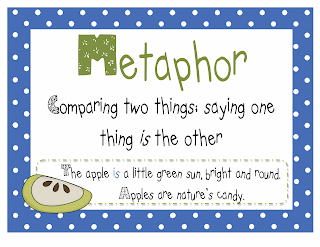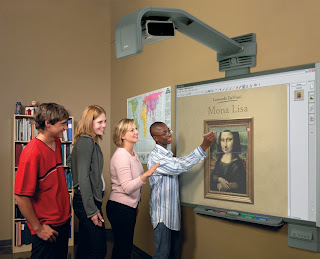Did You Know? 3.0 - A John Strange 2012 Version
First of all, I must say, no I did not know! That's incredible. I know that many people use Google, YouTube, and send SMS messages daily, but the fact that MILLIONS of people use them every second just blows my mind. That really goes to show how technologically dependent we have become. I don't know if I am anywhere near being prepared to be an educator. Sure, I know the basics of most subjects. However, I never considered that when the kids that I will teach graduate, the jobs available will be so much more advanced than they are now. I wonder how educators that don't have classes like these will accommodate? I need to learn as technology progresses so I will be able to adequately prepare my future students!
Secondly, you would think America, the strongest nation in the world right now, would be the smartest. The fact that we are a dwarf in comparison to India's intelligence is just ridiculous. Not to mention China will soon have more English-speaking people than the rest of the world! Well, why aren't more of us learning to speak Chinese, or even Spanish? We have so much technology, which increases by the minute, yet there are still millions of people who are so much smarter than us. That makes me question if we are really putting our resources to use. We can have all the knowledge and technology in the world, but it's only good to us if we all know how to use it! It can make us so much smarter, or just that much dumber...
Mr. Winkle Wakes
Wow, this video really left an impression on me. I was a bit confused as to what the video was about at first, and what exactly Mr. Winkle was trying to find. However, it turns out to be quite ironic. The one thing he found joy in was really the thing he should have been most disappointed to see. We put so much effort into technology and appearances, making everything appealing to the eye and to the working body. On the other hand, it leaves one to question: how much do we really care about education? We need to understand that the knowledge base of today's children is just as important, because they are the ones who will control the future!
Another disturbing thing is how true this video really is. Granted, there are some schools and classes, such as this one, which implement the use of technology. More often than not, however, a teacher standing up and lecturing all day while the students listen is the only form of learning. I've had several teachers myself that stood up and just talked all period, and honestly I didn't learn a thing. It's quite easy to memorize the material and regurgitate it onto a test. Until teachers start using more innovative technology and giving the students hands-on learning, today's kids won't be able to reach their full potential.
Sir Ken Robinson: The Importance of Creativity
I love some of the points Ken Robinson made in this video. I completely agree with his statement that we don't grow into creativity, but rather we grow out of it. It's true that schools basically train their students to fit the mold of whatever the fastest growing jobs are, rather than fitting the schooling to match the child's personality and needs. Our creativity is gradually taken away, and it turns us into the fearful individuals that he referred to. Honestly, it limits our full potential as human beings. When that confidence is taken away, it's hard to get back and some people won't make important life changing decisions, not because they aren't fully capable, but simply because they've been told so many times that they can't do something that they start to believe it.
I can also relate to his reference to stereotyping. Americans are so quick to point a finger and try to label people when they aren't exactly the same as everyone else. Personally, I believe a lot of that just has to do with not wanting to deal with those special kids. They'll label them with ADHD or some other learning disorder in a heartbeat rather than actually talking to the child and trying to figure out why he/she is acting that way. In the long run, that just leads to more problems. When that creative outlet is taken away, especially from kids who learn better actively, that pent up emotion has to come out somewhere, and many times that's where the behavioral issues begin. If we actually took the time to figure each child out, I think we would find that there is a lot more diversity than just the usual 9-5 job that most schools put their students on the path for.
In Light of Mr. Winkle Wakes...
The way teachers educate and how classroom learning is set up has got to change. Just lecturing isn't going to work forever. Technology is improving so quickly that eventually lectures and written tests aren't going to be able to give students the full benefit of education. Really, teachers who do that even today are missing out and so are their students!
Interactive learning is the new trend. Knowing how to effectively communicate with people in the outside world is key to being successful in any career path. Why not start learning those skills as early as possible? Knowledge is power and hands on learning allows students to get a better experience that they will actually remember past a test date.
Pinterest: Using Available Resources
I would definitely use Pinterest for lesson plans and sharing ideas. The website has a lot of great visuals that would be a neat way to spice up my lessons and make them a little more appealing to my students. Also, it's online so they could easily reference back to the pictures that I showed them in class. I'm always up for new ideas as well, and this would give me access to plenty of creative brains that could help me give better aids to my students, and hopefully return the favor to other teachers around the world.
Rachel Friedrich's Pinterest has to be my favorite. She's got resources for everything you can think of! Virtual learning, especially the videos like the Magic School Bus and Reading Rainbow is the very best way for kids to learn. The younger you are when you learn things, the better you remember them. These types of videos are fun and entertaining for kids to watch, but at the same time they contain valuable information which the students are getting to see in a way that they will be more likely to recall later on. Some of my first memories are the elementary school jingles that I was taught! Who says learning can't be fun?
Pinterest is going to give me some good ideas for cute projects and classroom artwork, especially if I end up being an elementary school teacher. I'm definitely going to use it to find some pictures that I can make and put on the walls of my class that will serve as simple reminders to help my students; such as cues to remember when trying to organize an outline for a paper. I'm also going to use it to provide my students with an outlet to post their pins to whatever assignment it is that I give them, and to provide them with useful links to educational tools that they can look at on their own time. Pinterest is going to help me a lot in the creativity department!





















